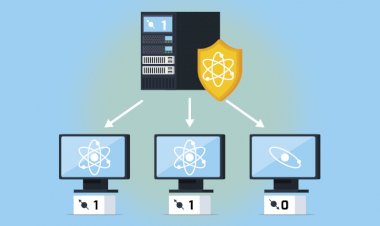How Can You Optimize Your Portfolio with Quantum Computing?

Explanation of how quantum computing can be used to optimize investment portfolios, including the use of quantum algorithms such as the Quantum Approximate Optimization Algorithm (QAOA).
Discussion of the possible advantages of quantum portfolio optimization, including enhanced risk-adjusted returns.
Portfolio Optimisation.
The construction of investment portfolios that optimize risk-adjusted returns is a crucial task in finance known as portfolio optimization. Traditional portfolio optimization achieves this by using sophisticated algorithms to analyze historical market data and pinpoint the best investment strategies based on risk tolerance and investment objectives.
Portfolio optimization can be carried out much more quickly and effectively than with classical computing techniques thanks to the power of quantum computing. Large datasets can be analyzed more accurately and quickly using quantum algorithms, like the Quantum Approximate Optimization Algorithm (QAOA), to pinpoint the best investment strategies.
Enhanced risk-adjusted returns are one of the main benefits of quantum portfolio optimization. Investors can obtain better risk-adjusted returns by building investment portfolios using quantum algorithms as opposed to conventional methods of portfolio optimization. This is because quantum algorithms can analyze more data and identify more complex investment strategies than classical algorithms, which can lead to better investment outcomes.
Quantum portfolio optimization also has the benefit of being able to manage multiple investment goals and constraints at once. For instance, an investor may have a number of investment objectives, such as increasing returns while reducing risk, and a number of restrictions, such as a cap on the amount of money that can be used to buy particular assets. These goals and restrictions can be examined simultaneously by quantum algorithms, resulting in investment portfolios that satisfy a variety of goals.
But there are also difficulties and restrictions with quantum portfolio optimization that must be taken into consideration. For smaller investors, adopting quantum portfolio optimization may be challenging due to the high cost of quantum hardware and the requirement for specialized knowledge and skills. It may also be challenging to implement investment strategies based on quantum portfolio optimization due to the complexity of quantum algorithms, which can make it challenging to interpret and comprehend the results.
Quantum portfolio optimization has the potential to completely alter the way investment portfolios are created and managed, despite these difficulties. Quantum portfolio optimization has the potential to enhance investment outcomes and lower risk in the financial markets due to its increased speed and accuracy in analyzing large datasets and identifying optimal investment strategies.

 content-team
content-team 


















